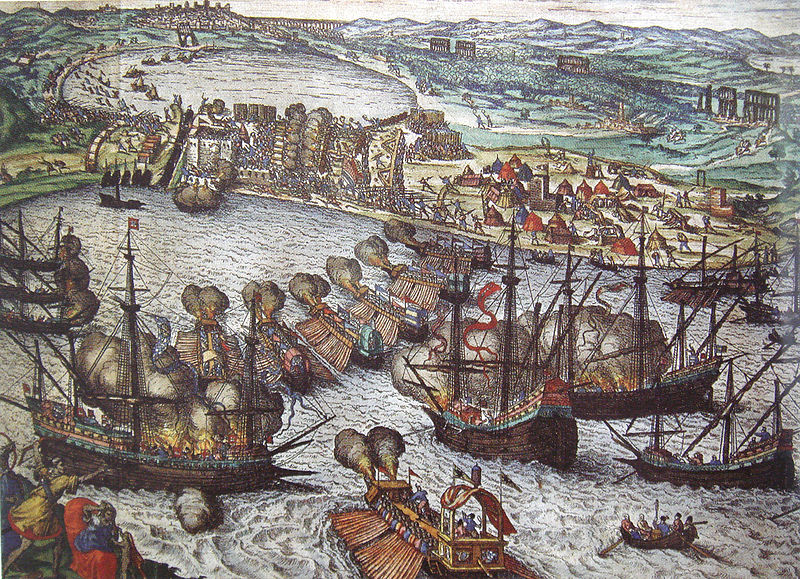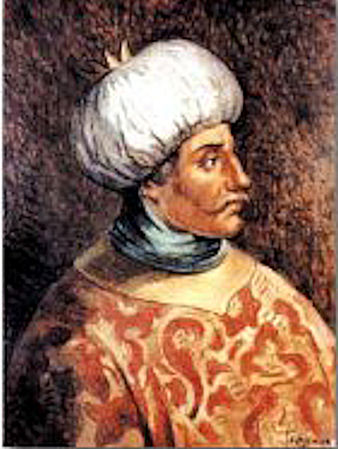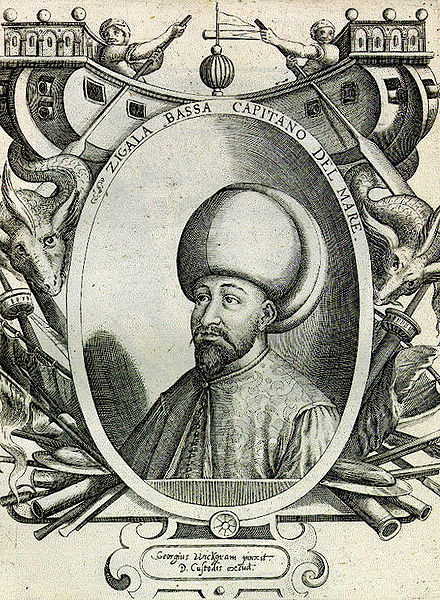Meanwhile the capture of Tunis had made patent to all Europe how deep was the wound that the credit and power of the Ottoman Empire had received at Lepanto…. All this cruelly wounded the overweening pride of Selim, and he was consumed with the desire of avenging himself by reconquering Tunis and Goletta. He was urged, with malicious eagerness, to undertake this enterprise by Aluch Ali and the renegade Mustafa, one of the engineers who built Goletta in the time of Charles V. The name of this traitor was Jacobo Zitolomini. Resenting the treatment he had received from Philip II, he fled to Algiers to Aluch Ali, who took him to Constantinople, where he revealed to Selim a sure and secret way of taking Goletta.
At the beginning of May, 1574, D. John received an urgent message from Gabrio Cervelloni, to say that the Turks were preparing a very powerful fleet; that it was feared that they would fall suddenly upon Tunis, and that, in consequence of this, funds should be sent as quickly as possible to finish the new fort, which was not yet completed. D. John was at Genoa, quieting the disturbances there, and he hastened to send the Commissary of the Fleet Juan de Soto to Madrid, to warn Philip II of the danger which threatened…. D. John then exhausted all his resources, and sent D. Bernardino de Velasco with twenty Neapolitan galleys and four companies of Italian infantry. With these comings and goings summer was getting old, and on the 13th of August, at the Cape of Carthage, appeared the dreaded Turkish fleet of 300 ships and 60,000 soldiers, the fleet being commanded by Aluch Ali, and the troops by Selim’s son-in-law Sinan Pasha, the renegade.
A great outcry arose at the extreme peril of the Barbary Christians, and by every means in their power they sent to ask help from Granvelle, Terranova, and, above all, from D. John of Austria, in virtue of his office and Christian piety. He wished to fly to their aid, abandoning everything. He wrote first, however, to the Duque de Sesa, “To urge the Cardinal to send people to help Goletta, as that province was in his charge.”…
Meanwhile D. John, tired of waiting for orders, troops and money which did not come, and making it a point of honor to go to Tunis, moved with desperate activity from Genoa to Naples, Messina and Palermo, recruiting soldiers everywhere, chartering ships, and pledging for all this his plate, his jewels, and even his word, until he had collected at Messina a moderate fleet with no lack of fighting men. He was all ready to sail for Africa, when he met with another obstacle…. The sea! The terrible sea, which rose in a furious storm which threw him to Trapani, much against his will, and kept him there days and days, giving time for Christians to perish and for the Turks to become victorious.
Three times he tried to leave the port, defying the storm, and as often had to retire before the surging waves. Then he sent four galleys without quarter-decks and platforms on the forecastles to take the mere hope of help to Goletta, but the implacable tempest prevented this by destroying two of them. At last the weather improved; but before D. John could put to sea, a French galley, without masts and knocked about by the storm, was driven into the port of Trapani. On board of her was D. Juan Zagonera, with fifty soldiers, all that remained at liberty of the garrison that D. John had left in Barbary. From them he heard of the terrible disaster. The Turks were in possession of Tunis; three thousand soldiers were dead, and the rest wounded or captives; Pagano Doria had been beheaded; Gabrio Cervelloni, D. Pedro Portocarrero and D. Francisco de Avila were the slaves of Sinan; the new fort razed before it was finished; and Goletta, the glorious legacy of Charles V, blown up by mines, and erased from the African soil by Aluch Ali, as the wind of the desert obliterates footprints.
Rev. Fr. Luis Coloma, The Story of Don John of Austria, trans. Lady Moreton, (New York: John Lane Company, 1912), pp. 328-331.
Short Stories on Honor, Chivalry, and the World of Nobility—no. 19













